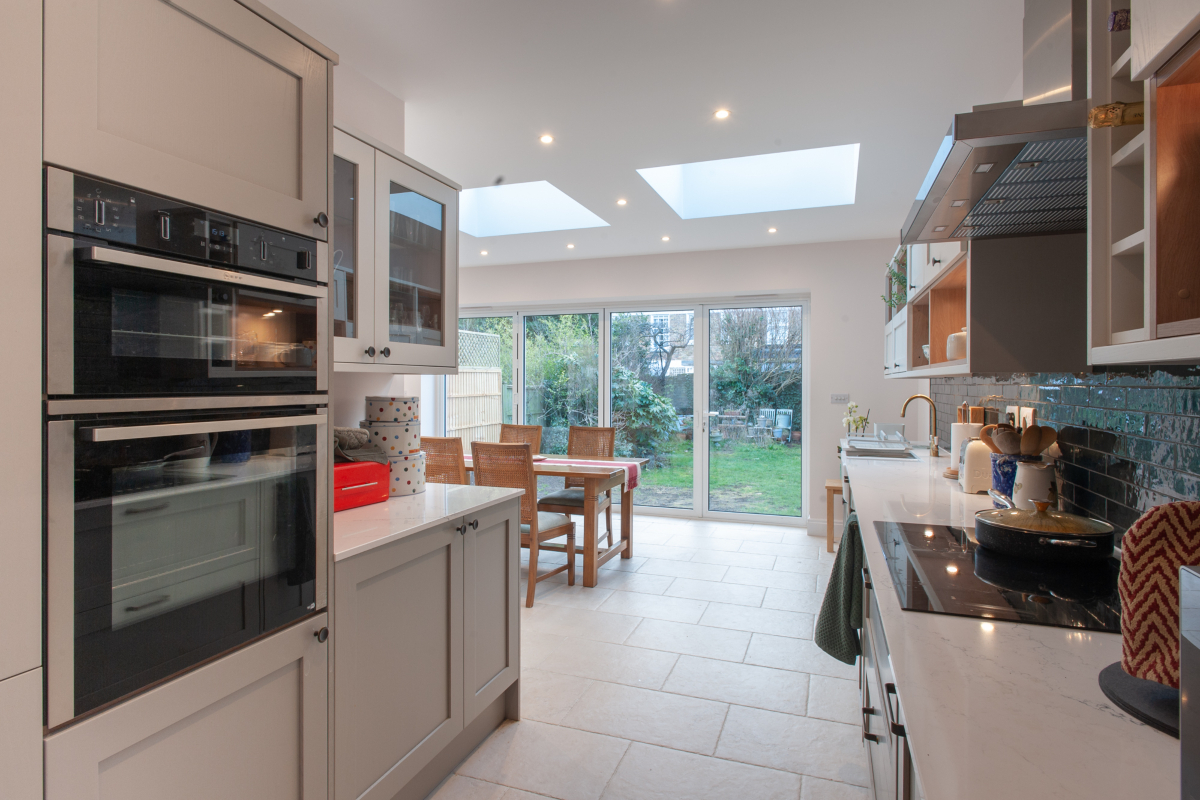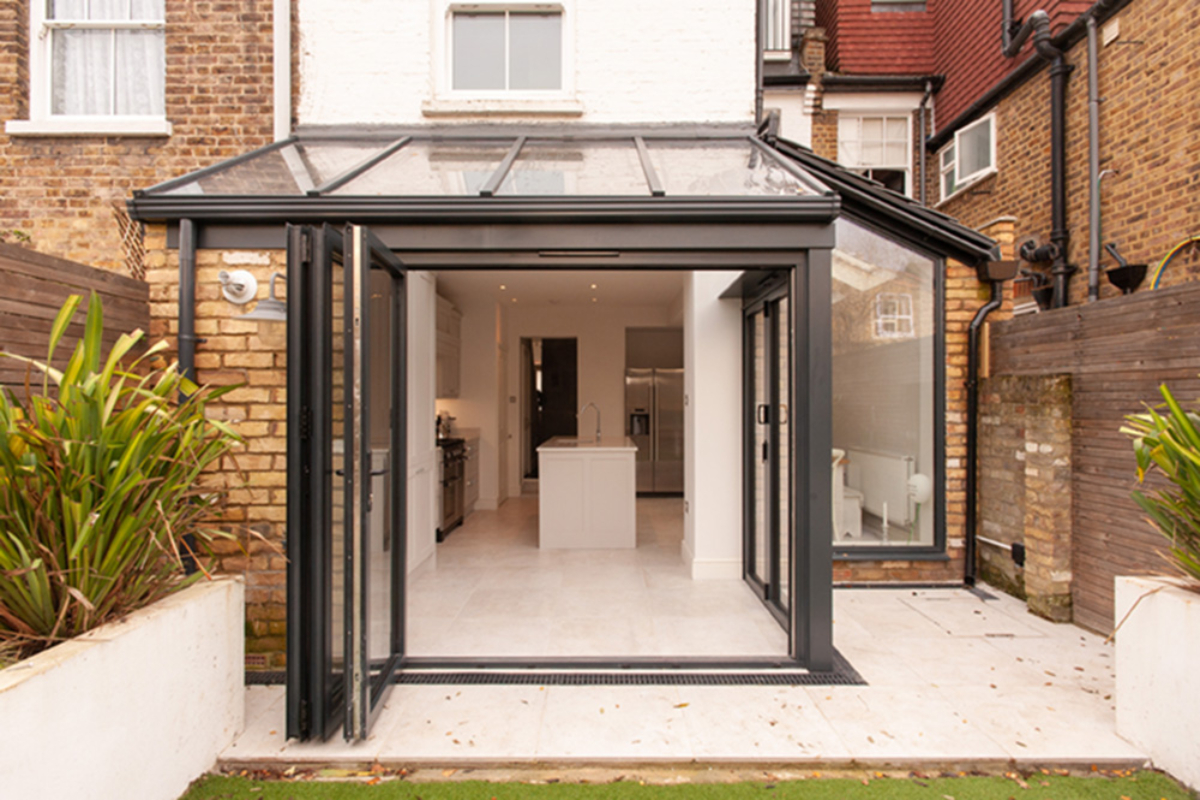Loft conversions are not just suitable for almost any property type, but they are also relatively easy to build, easy on the budget, and their versatility of design gives property owners endless options on how to use the additional space.
But with seemingly-limitless options comes the dilemma of choosing the right one. So, what exactly are your choices? And how do you decide which loft conversion is the right one for you? Read on below to find out:
1. Loft conversion with Skylights

This is easily the simplest style of a loft conversion, which is both minimally disruptive and extremely cost-effective. The simplicity and uncomplicated design of a skylight loft conversion makes it possible to be constructed without requiring planning permission.
It involves the installation of rooflights (or skylights) into the pitch of the existing roof without making other major structural changes to the roof. However, since there is no extension of the roof taking place, it is imperative that there should already be sufficient head height available.
And with the addition of floor reinforcements, insulation, and a staircase, the rooflight loft conversion may cost between £20,000 to £50,000.
The rooflight or Velux loft conversion may be used to create virtually any type of room, from a quiet library or study nook, to a private and well-lit bathroom.
2. Loft conversion with Pod Room

A loft pod room is essentially a supplementary space of around 3m x 3.5m built above the first floor, over the back of the house. It can be connected to an existing loft conversion, or built as a stand-alone pod or BUD (back upper dimension).
The requirement for planning permission for loft pod extensions is generally dependent on the extent of the original extension, and whether the property is a flat, or is listed in a conservation area.
And while the loft pod may be used as a home office, playroom, or even a spacious bathroom, its eventual purpose is only limited by your imagination.
A loft pod usually costs between £25,000 to £60,000. The price becomes considerably higher when built separate and unconnected to the main loft. However, it is still considered to be a cost-effective solution to increasing the living space of your home.
3. Loft conversion with Roof Terrace

A highly-desirable and sought-after loft conversion, especially in properties that feature very little garden space, roof terraces help create beautiful spaces within your home. Ranging from a simple Juliet balcony to an expansive terrace, these conversions offer incredible views, natural light, and ventilation.
Roof terraces do, however, require planning permission and may cost upwards of £20,000. But they are well worth the investment. After all, designing and constructing a dual outdoor and indoor area within your loft space has exceptional appeal.
Not just that. The signature designs and splendid surroundings of roof terraces add considerable value to your property.
4. Double Mansard

Particularly suited to period properties including terraced, detached, and semi-detached homes, a double mansard is the largest and most extensive type of loft conversion.
It involves creating a mansard roof, by altering the slope of the roof to an angle of 72 degrees, at the front and rear of the house; essentially creating an entire new storey. And though this invariably requires planning permission and is expensive to construct, these extensions have a dramatic effect on the space within.
With the extensive space made available, a double mansard may be used to create multiple rooms, including one or two bedrooms and en-suites. All of which have a significant impact on the overall value of the property.
5. Dormer extension

Dormer extensions are increasingly viewed as being a balanced option for a loft conversion; in that they help create more head room and floorspace than a roof light conversion, but are cheaper and less complex to construct when compared to a mansard.
The dormer roof extension involves vertically extending the existing roof to create a flat roofed or pitched roof dormer. The choice of style is largely based on the aesthetic created, while the installation of dormer windows further enhances the space and brightens the room.
Dormer extensions are suitable for almost type of home, and are particularly popular in semi-detached properties which have a sloping roof. And though they may require planning permission, dormer loft extensions allow for the design and creation of beautiful, bright, and airy rooms.
6. Hipped roof extension

Detached and semi-detached properties which feature a sloping roof are ideally suited for hipped roof loft conversions.
As this type of extension involves considerable structural work, including transforming the slope of the roof into a vertical wall, it is one of the more expensive types of loft conversions (costing upwards of £40,000), and generally requires planning permission.
Hipped roof extensions, however, add a great deal of living space, are visually appealing, and add incredible value to the property. Therefore, they are considered to be well worth the initial investment.
7. L-shaped Dormer extension

Essentially a larger and more spacious version of the rear dormer extension, the L-shaped extension results from the combination of two dormers that are connected together.
These are more suited to Victorian and Edwardian properties that may already have a rear extension, and help create a great deal of added space, perfect for designing extra bedrooms, en-suites, or home offices.
These dormers do not always require planning permission if they fall under permitted developments, but it always best to check before initiating the build.
L-shaped dormer extensions may cost between £30,000-£60,000, but are an excellent investment as they allow for the creation of multiple additional rooms.
Conclusion
Loft conversions are a true favourite of London homeowners. And for good reason. Their adaptability and wide range of designs allow for the creation of incredible new spaces.
But, to optimise the potential of your loft space, it is equally crucial to understand which type of loft conversion is best suited to your home, and which floor plan best fits your needs and budget.
Having a clear vision, a comprehensive plan, a detailed budget, and the right experts and professional advice allows you to design and create the ultimate loft conversion for your home.
Looking for the best loft conversion specialists? Contact the incredible team at Good Design and Build!
We help you create stunning extensions and loft conversions that add space and value to your home.




